The Best Synthetic Down Jackets for Staying Warm and Dry
Synthetic insulation rivals down in warmth — and surpasses it in durability and water resistance.
 Arc’teryx, Finisterre, Patagonia
Arc’teryx, Finisterre, PatagoniaEvery product is carefully selected by our editors. If you buy from a link, we may earn a commission. Learn more
Synthetic down has traditionally been regarded as a cheaper, less effective alternative to traditional down insulation. But thanks to advances in technology, synthetics have come into their own, rivaling goose down in many areas and even surpassing it in durability and water resistance.
Technologies like Polartec’s Alpha fiber, developed for military use, or Columbia’s proprietary TurboDown, a mix of synthetic materials and goose down, are finding their way into a wider range of products. The result of all this innovation is that present-day consumers have access to synthetic jackets that are warmer, better ventilated, lighter and more durable than ever. The fake stuff is here to stay, and that’s a good thing.
This definitive guide provides information on the best synthetic insulation jackets available based on features like warmth, weight, durability, water resistance and price. In it, we offer suggestions on which jacket(s) to buy for different activities and needs. Keep reading beyond the picks for more info on synthetic insulation and how to wash and care for a jacket made with it.
How We Tested

We took these hardworking mid and outer layers on plenty of excursions across North America, from the frostbitten hills of the Northeast to the wet and rainy shores of the Pacific Northwest, and everywhere in-between. We tested for warmth-to-weight ratios, water resistance and packability and took note of materials and construction. After testing a wide selection of synthetic down jackets, we landed on these as our top picks.
To learn more about our testing methodology and how we evaluate products, head here.
The Best Synthetic Down Jackets
Best Overall Synthetic Down Jacket: Arc’teryx Atom Jacket
 Arc’teryx
Arc’teryxBest Overall Synthetic Down Jacket
Arc’teryx Atom Jacket
Specs
| Fill Material | Coreloft Compact 60 |
| Shell Material | 20D Tyono, stretch fleece (94% polyester, 6% elastane) |
| Waterproofing | DWR finish |
| Weight | 12.2 ounces |
Pros
- Even after plenty of wears, this jacket still looks brand-new
Cons
- Price prohibitive for those who live in warmer climates and won’t wear it frequently
The Atom is made with breathable Coreloft insulation, which functions better than down when placed under a shell. Combined with a hydrophobic finish, it does a lot to keep the wearer from getting damp from either weather or exertion. Stretch fleece side panels keep the LT flexible. Arc’teryx updated its benchmark design with a longer, more relaxed fit and more durable construction.
In design and function, the Atom is about as simple as it gets, but that’s a good thing. It’s a no-frills insulating layer that’s there when you need it and doesn’t look half bad when you move from outdoor adventure to local watering hole. The side panels breathe exceedingly well thanks to the aforementioned stretch panels. We’ve used this jacket for everything from travel to rock climbing to snowboarding to hiking, and it still looks as good as the day we bought it.
Best Upgrade Synthetic Down Jacket: Patagonia Micro Puff Hoody
 Patagonia
PatagoniaBest Upgrade Synthetic Down Jacket
Patagonia Micro Puff Hoody
Specs
| Fill Material | 65-g PlumaFill, 100% polyester |
| Shell Material | 10-D nylon ripstop Pertex Quantum |
| Waterproofing | DWR finish |
| Weight | 9.3 ounces |
Pros
- So light, we forgot we had it on
Cons
- The collar feels a little too constrictive
Instead of using horizontal baffles, as it does with many of its down jackets, or the quilted design exemplified in its Nano Puff, Patagonia applied a unique stitching pattern to create a mostly-continuous maze of channels that prevent the insulation from bunching. The real innovation is on the inside: Patagonia developed a new type of insulation called PlumaFill that’s made up of down-mimicking polyester fibers that are secured together in one continuous, fluffy line.
The result is a jacket super lightweight jacket that doesn’t quite feel like an “ultralight” jacket — it still has two zippered hand pockets and two interior mesh pouch pockets. Jackets that spare no detail when cutting back on weight don’t have these useful everyday features. The Micro Puff is slightly pricier than Patagonia’s other synthetic puffies, but if you’re looking jacket that’s exceptionally lightweight and warm at the same time, this is a great option.
Notes: For more details, read our in-depth review. The Micro Puff is available without a hood for $249.
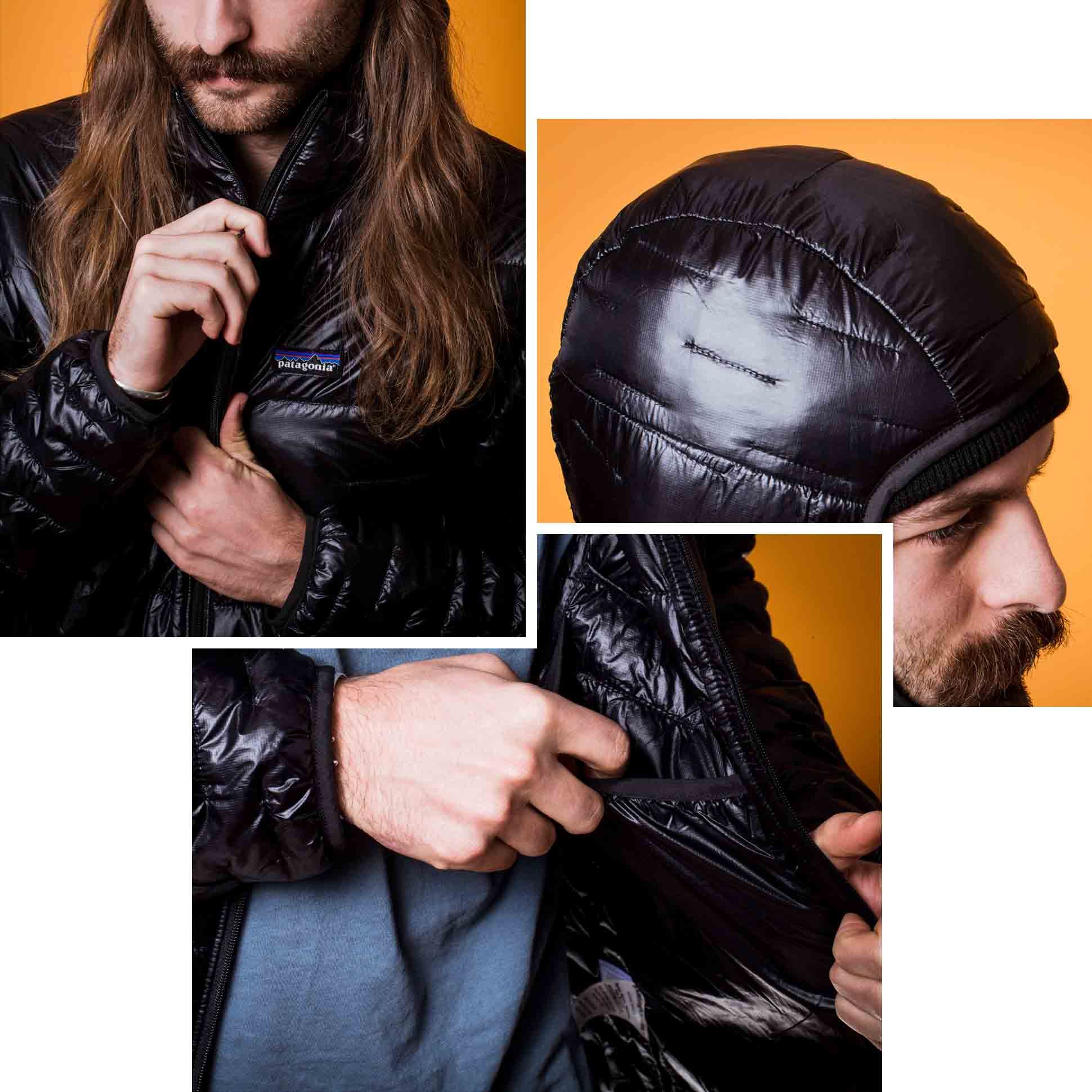
Best Women’s Synthetic Down Jacket: Finisterre Nimbus
 Finisterre
FinisterreBest Women’s Synthetic Jacket
Finisterre Women’s Nimbus Jacket
Specs
| Fill Material | 100% Repreve Insulation |
| Shell Material | 100% recycled polyester ripstop shell |
| Waterproofing | Fluorocarbon-free durable water repellent finish |
| Weight | 16.7 ounces |
Pros
- Versatile, easy to pack (breaks down into inner pocket)
- Comfortable and warm
Cons
- Can start to feel bulky when layering
- Doesn’t provide great waterproof protection
I genuinely appreciate the care and craft that goes into Finisterre’s products and their commitment to utility and sustainability. I’ve had this jacket for two seasons and it’s been my daily go to through cold Colorado winters and traveled well through the seasons. It’s a perfect option if you can only pack one jacket and you are traversing different elevations or places where there are fluctuating temperatures.
The ability to fit and expand the hood have also come in handy when I don’t have space to pack extra layers, and it’s also a great option for outdoor overnights providing comfort and warmth. There is an inner storage pocket near the chest that is also extremely useful for storing important items like your keys, a multi tool or wallet. Not to mention they have a repair program so the life of the jacket is something I can depend on.
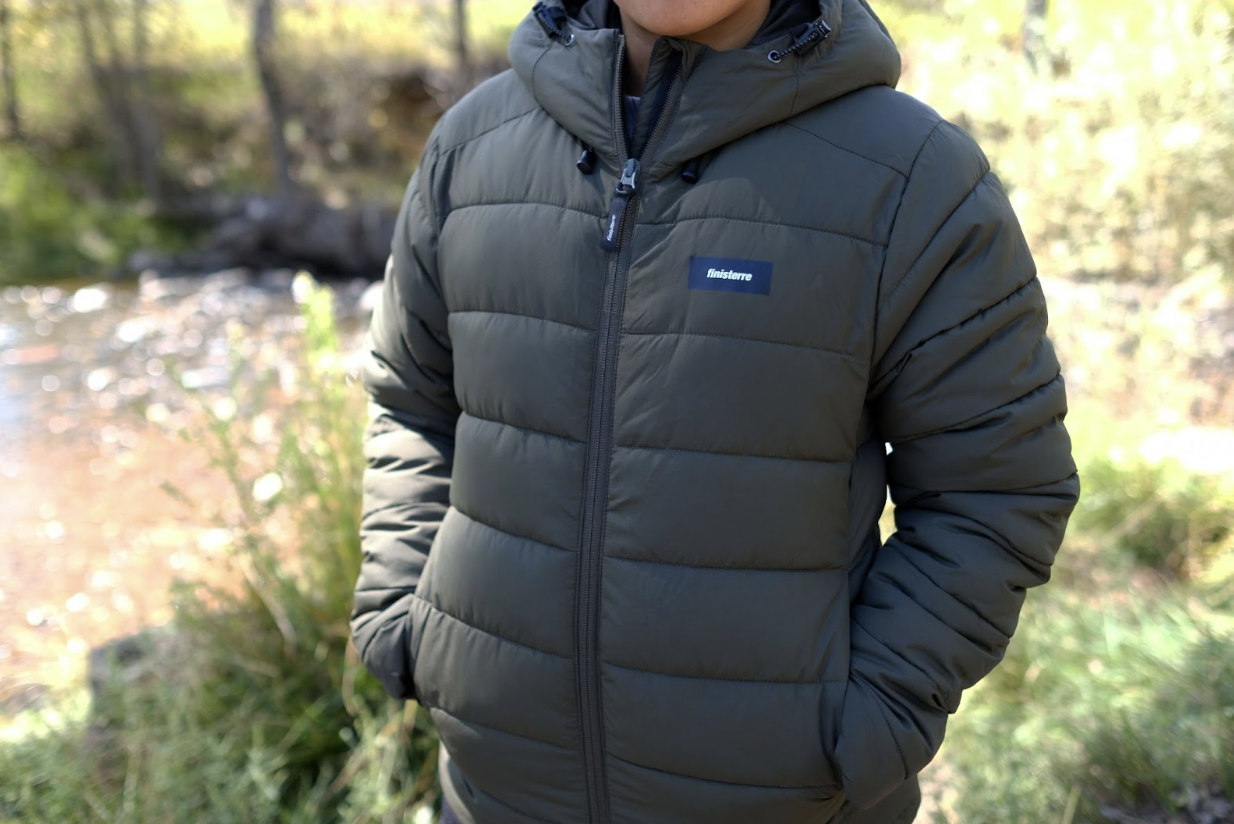
Best Affordable Synthetic Down Jacket: Rab Cirrus Flex 2.0 Insulated Jacket
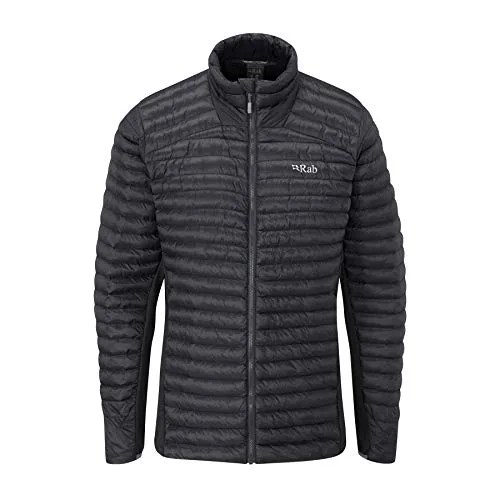 Amazon
AmazonBest Affordable Synthetic Down Jacket
RAB Cirrus Flex 2.0
Specs
| Fill Material | 100% recycled PrimaLoft Silver Insulation Luxe |
| Shell Material | Pertex Quantum 20D recycled polyamide ripstop/38gsm |
| Waterproofing | Fluorocarbon-free DWR |
| Weight | 13.5 ounces |
Pros
- Lightweight, packable, breathable
- Fit is accurate and comfortable
Cons
- Not for intense winter adventures
- Too minimal for some as a standalone layer
UK-based Rab Equipment is a mountaineering brand to its core, but that doesn’t mean its innovative technical outerwear can’t be leveraged for use closer to sea level. The Cirrus Flex 2.0 is the brand’s updated synthetic insulated jacket and it’s dead simple: less than 15 ounces, easy to pack, minimal pocketing. That’s it.
Well, almost. Alongside its sleek exterior, the Cirrus Flex 2.0 features stretch fleece panels, which help dump heat when you need it, and Primaloft Silver Insulation Luxe, which retains loft and dries quickly when exposed to adverse conditions. This jacket is made for fast and light adventures — you’ll want to leave it at home when heading out on more intense alpine adventures — but if you plan on moving fast, working up a sweat and staying out until the sun’s gone down, the Cirrus Flex 2.0 has your back.
Note: Another great, budget-friendly jacket to consider is L.L.Bean’s PrimaLoft Packaway Jacket ($169), which has a more traditional quilted look than the Cirrus.
Most Stylish Synthetic Down Jacket: Relwen Windzip Jacket
 Huckberry
HuckberryMost Stylish
Relwen Windzip Jacket
Specs
| Fill Material | 100% polyester, 60-gram down-alternative |
| Shell Material | 94% nylon, 6% spandex |
| Waterproofing | Water-resistant |
| Weight | ~10 ounces |
Pros
- Feels dense and cozy without being heavy
- Materials and construction are high quality
Cons
- Not as waterproof as other styles
-
$268.00
(30% off)
When designing the Windzip Jacket (and full Windzip series), Relwen’s designers used 1-inch baffles meant to mimic the design — and warmth — of sleeping bags. Paired with a nylon shell and polyester lining, the Windzip’s greatest strengths are its comfort, versatility and ruggedness, all of which intersect in a cozy, true-to-size layering piece. The 60-gram polyester fill kept our tester warm without succumbing to outside moisture, and the dual closure — snap placket and zip front — offers extra protection from the elements.
The feeling of holding, and wearing, the Wind Zip is unlike any other synthetic jacket on the market — our tester was pleasantly surprised to find it was less like a traditional, lofty down jacket and more akin to a weighted blanket, even though it’s only ten ounces. The Windzip is comfortable, stylish and works whether you’re running errands in town, out for a quick beer with friends or sitting around camp after a long hike.
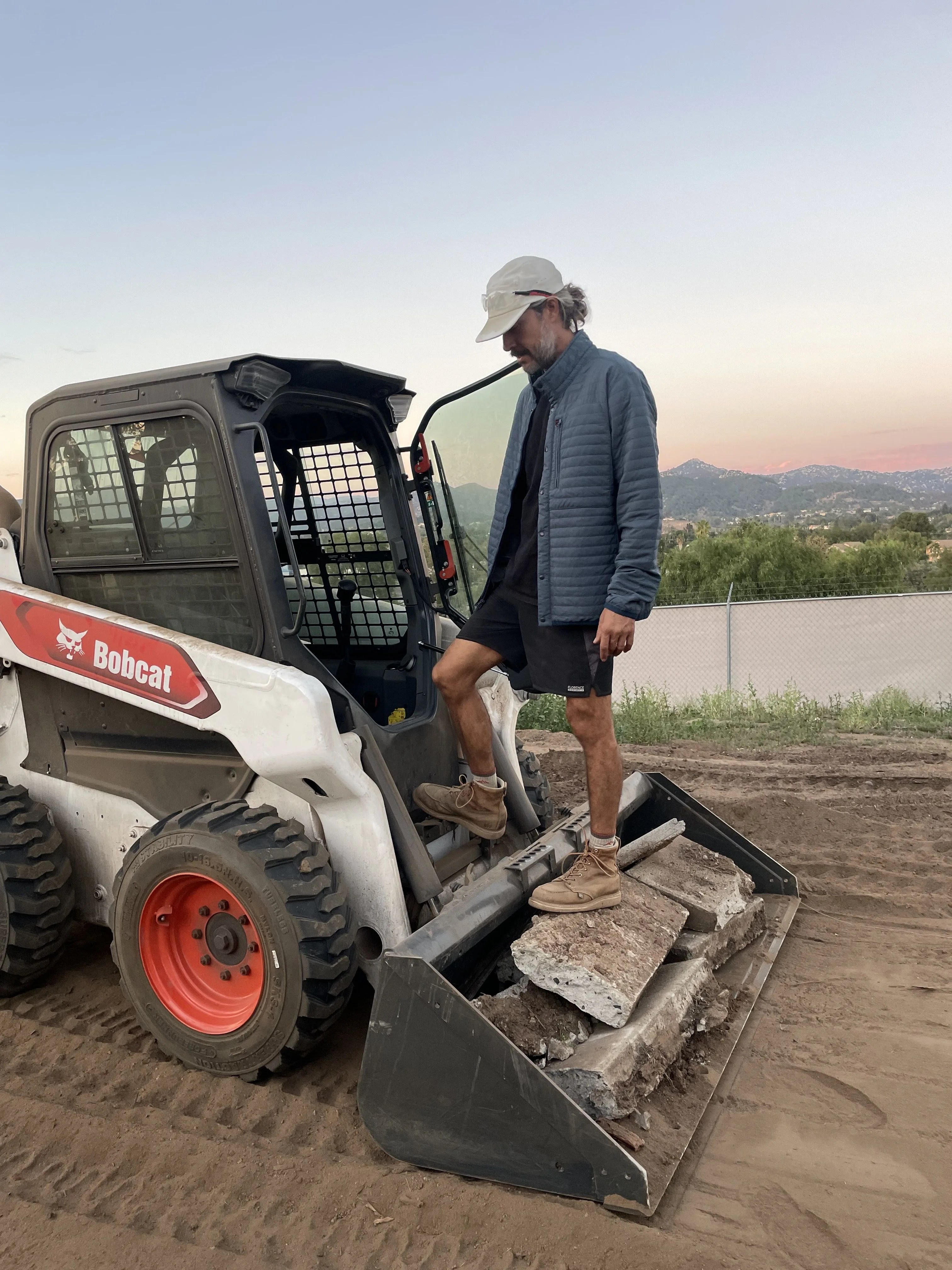
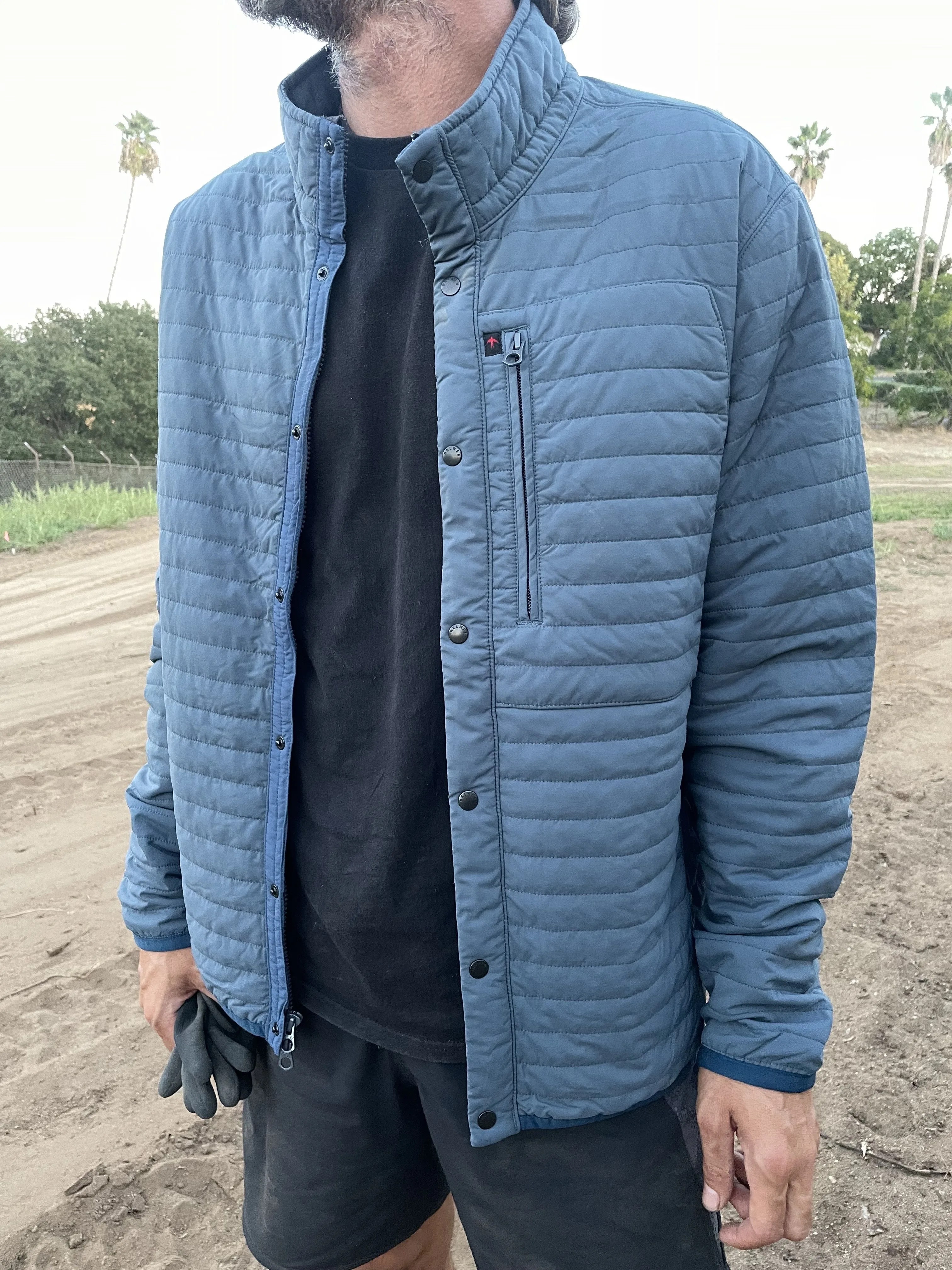
Best Heavy Jacket: Fjallraven Keb Padded Hoodie
 Fjallraven
FjallravenBest Heavy Synthetic Jacket
Fjallraven Keb Padded Hoodie
Specs
| Fill Material | 100% polyester G-Loft Supreme insulation |
| Shell Material | 100% polyester |
| Waterproofing | None |
| Weight | 1 pound, 12 ounces |
Pros
- Comfortable and cozy
- Built to last
Cons
- Too heavy for high-output adventures
- Pricey for how casual it is
Although it’s not made for the most technical environments in the outdoors, the Keb Padded Jacket holds its own when it comes to comfort and quality. Made with casual adventures in mind, it’s a bit pricey for its intended use; but if you place a premium on being comfortable around camp — or running errands in the winter — the Keb won’t let you down.
The Keb Padded Hoodie is a full pound heavier than most of the jackets on this list, but it also features a suite of thoughtful features that ultra-lightweight styles can’t afford to include. This includes a two-way main zipper, hood and hem adjustments, and plenty of pocketing. You won’t want to take this on any multi-day hikes or backpacking trips, but for casual fall and winter adventures, it’s great.
Best Mid Layer: The North Face Summit Series Casaval Hoodie
 The North Face
The North FaceBest Midlayer
The North Face Summit Series Casaval Hoodie
Specs
| Fill Material | 100% polyester stretch Ventrix |
| Shell Material | Nylon ripstop, recycled polyester, elastane |
| Waterproofing | DWR finish |
| Weight | 12.6 ounces |
Pros
- Innovative design alternately traps and releases heat, as needed
Cons
- Hood can get in the way of wearing as a midlayer
Inside the Summit Series Casaval Hoodie is Ventrix, The North Face’s proprietary active insulation. We’ve been fans of Ventrix insulation since it came out in fall of 2017, and it’s been a staple on this list since. Here’s how it works: Like other types of active insulation, Ventrix is highly breathable, but unlike those other fills, it has laser-cut perforations that open and close with motion. When you’re idle, the perforations remain closed, thereby trapping heat. When you’re active, the perforations stretch open to release heat.
The Casaval Hoodie is one of The North Face’s best implementations of Ventrix. It’s a full-zip midlayer that looks like a casual sweatshirt but acts like the technical layering piece it truly is. The Casaval is durable and as thin as an effective synthetic jacket can get — so while it may not be the heavy-duty layering piece you need on mellow days, it is the layer you’ll love climbing, touring and trail running.
Best Pullover Jacket: Norrøna Lofoten Primaloft80 Anorak
 Norrøna
NorrønaBest Pullover Jacket
Norrøna Lofoten Primaloft80 Anorak
Specs
| Fill Material | PrimaLoft Gold Aerogel |
| Shell Material | 30-denier Cordura ripstop, 60-denier 2-layer Gore-Tex |
| Waterproofing | Water-repellant |
| Weight | 23.2 ounces |
Pros
- Double-duty as a mid and outer layer makes price much more approachable
Cons
- Lack of a full zip can be annoying when trying to dump heat
No other jacket on this list is as feature-packed as Norrøna’s Lofoten Primaloft80 Anorak. That’s because the Norwegian outerwear company imagined it both as a mid-layer and outer layer for skiing. As such, it gave the jacket a two-way central zipper so you can access things beneath it — like an avalanche beacon or a snack — without unzipping entirely, as well as extra-long side zips for ventilation, one interior and two exterior chest pockets, a hoodie-style torso pocket and adjustable hood and hem.
The Lofoten Anorak’s less apparent features are impressive too. Its ripstop shell is reinforced on the shoulders, cuffs, seat and torso with Gore-Tex two-layer fabric for better wind and water resistance. There’s tons of PrimaLoft’s insulation tech inside, including Aerogel, a super-light and super-warm material initially developed for NASA, and Bio, which is biodegradable at the end of its life. All together, these features combine to create an exceptionally warm jacket that functions incredibly well beyond the mountains Norrøna made it for.
Best Insulated Shacket: Topo Designs Insulated Shirt Jacket
 Topo Designs
Topo DesignsBest Synthetic Shacket
Topo Designs Insulated Shirt Jacket
Specs
| Fill Material | PrimaLoft Black Eco |
| Shell Material | 68% cotton, 32% nylon |
| Waterproofing | DWR finish |
| Weight | Not specified |
Pros
- Casual style works in urban and outdoor environments
Cons
- Limited sizes available
-
$179
(39% off)
Unlike the rest of the jackets on this list, Topo Designs went with more of a style angle on its Insulated Shirt Jacket. It closes with snap buttons and has snap cuffs and a collar that lies flat and away from the chin, like a button-up shirt. It even has two chest pockets and a material that’s more like twill than the ripstop polyester the other jackets on this list are made of.
But here’s where it gets interesting and versatile: turn the Insulated Shirt Jacket inside out, and you’ll find that familiar DWR-coated, micro-ripstop fabric, plus a Napoleon pocket with a zipper. Between the two layers is 60 grams of PrimaLoft Black Eco synthetic insulation — enough to keep you warm in weird shoulder season temperatures and cooler days when you want some stealthy extra heat.
Best Synthetic Insulated Parka: Arc’teryx Therme Insulated Parka
 Arc’teryx
Arc’teryxBest For City Use
Arc’teryx Therme Parka
Specs
| Fill Material | Responsibly-sourced down and Coreloft synthetic fill blend |
| Shell Material | 2L Gore-Tex material |
| Waterproofing | DWR |
| Weight | 2 pounds, 5.8 ounces |
Pros
- Subtle styling and not at all shiny
Cons
- Longer hem can get in the way of activities that require more movement
Arc’teryx never makes anything without intention, and the Therme is no exception. The jacket is equally waterproof and warm, making it perfectly suited to both urban environments and other climes with variable precipitation.
The soft, 2L Gore-Tex outer shell protects you from rain, snow and wind, while a blend of 750 fill power down and synthetic Coreloft Insulation provides lightweight warmth, augmented by an insulated hood and gaskets in the hood and cuffs to seal out the cold. The parka also features laser-cut vents at the underarms to keep you from getting too warm, plus an internal zippered chest pocket and hand pockets.
Best Packable Style: Outdoor Research SuperStrand LT Insulated Hoodie
 REI
REIBest Packable Style
Outdoor Research SuperStrand LT Insulated Hoodie
Specs
| Fill Material | VerticalX SuperStrand polyester |
| Shell Material | 12-denier ripstop nylon |
| Waterproofing | None |
| Weight | 10.9 ounces |
Pros
- Compressibility makes this an easy packing item
Cons
- Lack of waterproofing means you’ll still need to wear a shell
-
$235
(30% off)
There have been multiple advancements in insulation construction in the last decade, but none as useful as the increased packability and compressibility of synthetic fibers. The SuperStrand LT Insulated Hoodie is as super as the name suggests: it can pack down into the size of your palm when you’re not wearing it, making it an easy add to any packing list. The discontinuous quilting pattern helps to reduce stitching and increase warmth, and the synthetic insulation, paired with ultra-durable ripstop nylon shell fabric, help to increase its functionality in stormy and wet weather. If warmth-to-weight and packability are the biggest factors in your purchasing decisions, place this hoodie at the top of your list.
Most Versatile Synthetic Down Jacket: Houdini Dunfri Jacket
 Houdini
HoudiniMost Versatile Synthetic Down Jacket
Houdini Dunfri
Specs
| Fill Material | PrimaLoft Gold Active+ |
| Shell Material | 100% recycled polyester |
| Waterproofing | PFA-free DWR finish |
| Weight | 16.4 ounces |
Pros
- Layers easily under a shell or coat
Cons
- Pricey for a midlayer
The Dunfri’s subtle design gives cold-weather warmth a stylish edge that makes it perfect for life in towns and cities. But the best thing about the Add-In isn’t style; it’s versatility.
Houdini designed the Dunfri as a layering piece that could handily accompany other jackets like its One Parka or awesomely weird Cloud. As such, the Dunfri contains a Goldilocks-sized fill of Primaloft Gold Active+ insulation, which you might otherwise find in jackets for activities like skiing or hiking. It keeps the Dunfri from becoming bulky and makes it perfect for cool to cold temperatures, which, for many, will make this jacket appropriate for all but winter’s worst days.
What to Know Before You Buy a Synthetic Down Jacket
Down vs. Synthetic
The best insulating piece, whether it’s a jacket or a sleeping bag, must be warm, light and easily packable. Down and synthetic-filled products both offer these qualities, but there are pros and cons to each.
Down comes from the layers under protective exterior feathers of geese and ducks — it works for them while they float and fly around every winter, so of course, it keeps us warm as well. But when natural down gets wet, it clumps and loses a lot of its heat-retaining ability. Also worth noting: although big efforts have been made by a lot of brands and outfitters such as Patagonia and The North Face, not all down is sourced ethically, and animal cruelty can become part of natural down insulation’s production chain.
Synthetic insulation is our attempt to mimic natural down’s insulation power with polyester fibers arranged in different sizes that cluster and trap heat much like the real thing. Synthetic down really does insulate well, without losing packability or the lightness of natural down — not to mention it’s hypoallergenic. One trade-off is that synthetic down weighs slightly more by volume (and insulating ability) than natural down, so synthetic-filled gear tends to be marginally heavier and bulkier. On the flip side of the coin, synthetic down is less prone to clumping when it gets wet, so in mixed weather conditions, it might be a safer bet.
In terms of labeling, if a jacket just says “down” it’s definitely natural down insulation. You might see fancy terms added in, like Mountain Hardwear’s proprietary Q.Shield waterproofing treatment, but if it’s “down,” it’s still the real deal. You should also know that although the industry is still improving and innovating ways to make down more water-resistant, no feathers are truly waterproof. Synthetic insulation goes by a lot of names, depending on the brands associated with it, but synthetic down insulation will never be labeled as down unless it’s a clearly labeled mixture of real and synthetic materials.
Not sure which is right for you? If you’re going somewhere cold but mostly dry, natural down is probably the way to go, but it will probably be more expensive. Go for synthetic if there’s a fair chance of getting wet or if your true first concern is getting a break on the price.
Active Insulation
Until Patagonia released its Nano Air Jacket in 2014, active insulation flew below the radar (the concept was first introduced by Polartec in late 2012). Now there are enough companies making apparel that’s both warm and breathable that active insulation can officially be considered as its own category.
Technically, active insulation is a type of synthetic insulation (a water-resistant alternative to down), but because of some fundamental differences that make it unique, active should be considered on its own. The technology draws its name from its intended use — active insulation garments are insulating pieces that are meant to be worn during activity (unlike, for example, a down jacket one might throw on after activity once the body starts to cool down).
Every active piece has one feature in common: they’re incredibly breathable. How this is achieved depends on the insulation used in the jacket, and every company uses a different version. Some are proprietary, like Patagonia’s FullRange insulation, and some, such as Polartec’s Alpha insulation, which was originally developed for the US Special Forces, are sourced by a range of companies.
As with other types of synthetic insulation, active insulation is highly water-resistant and compressible. In comparison to regular synthetic insulation, active is the most breathable form of synthetic insulation available today thanks to a construction that prevents the migration of fibers within the piece while allowing for extra stretch and superior moisture management. Many active pieces are designed with an exterior shell that’s also more breathable but is often softer and less water-repellent than what’s found in other synthetic apparel.
All active insulation, no matter the brand, is designed to prevent lots of layer swaps so that it can be worn throughout the entirety of an activity like hiking, climbing or skiing.
How to Wash Your Synthetic Down Jacket
Most people take their synthetic down jacket for granted, expecting it to perform the same, year after year without any maintenance. Over time though, your jacket becomes compacted and dirty, which inhibits its loft and makes the jacket less warm. To clean your jacket, revitalize its warmth and get it ready for all your adventures, follow our simple guide.
Put your jacket into a washing machine without an agitator. It is easiest to do this at a laundromat, but if your home washer is of the large, front-loading variety, feel free to toss it in there. If you use a washing machine with an agitator, you run the risk of tearing open your jacket — so avoid agitators at all costs.
Wash with Nikwax Tech Wash. Though there are other good tech washes out there (namely Grangers), we recommend using Nikwax’s Tech Wash. Add the Tech Wash directly into the washing machine, using about three ounces. Follow the directions on the care label of your jacket for specific temperature and cycle settings.
Switch your jacket to the dryer and add tennis balls. Move your jacket over to the dryer, but before you turn it on, add in a package of new tennis balls. As the drier spins, the tennis balls will bounce around inside the drum, breaking up any clumps of insulation and helping dry the jacket completely. This also helps to restore the loft in the synthetic fibers. As for dryer settings, low heat for a long period of time is the name of the game.
Pause the dryer and manually break up any clumps. Every twenty minutes or so, pause the dryer and manually work out larger clumps of insulation. While the tennis balls work well to help break up clumps, you’ll need to put some extra effort in to break them up completely.
Tumble dry until the jacket is completely dry. Dry the jacket on low until it is dry the entire way through. While moist synthetic insulation still functions well, it’s prone to mold, which will lead to a stinky jacket.


